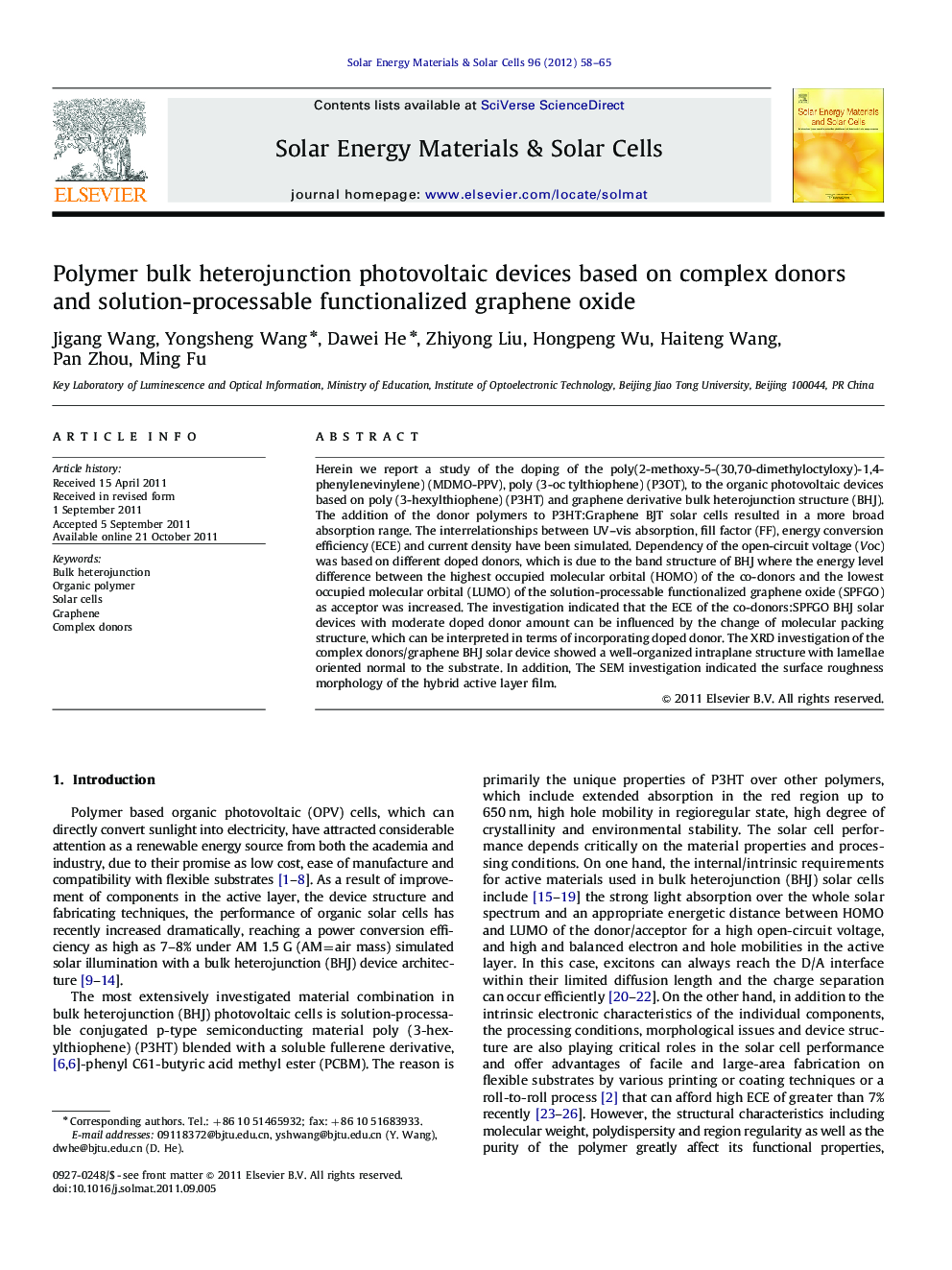| Article ID | Journal | Published Year | Pages | File Type |
|---|---|---|---|---|
| 79465 | Solar Energy Materials and Solar Cells | 2012 | 8 Pages |
Herein we report a study of the doping of the poly(2-methoxy-5-(30,70-dimethyloctyloxy)-1,4- phenylenevinylene) (MDMO-PPV), poly (3-oc tylthiophene) (P3OT), to the organic photovoltaic devices based on poly (3-hexylthiophene) (P3HT) and graphene derivative bulk heterojunction structure (BHJ). The addition of the donor polymers to P3HT:Graphene BJT solar cells resulted in a more broad absorption range. The interrelationships between UV–vis absorption, fill factor (FF), energy conversion efficiency (ECE) and current density have been simulated. Dependency of the open-circuit voltage (Voc) was based on different doped donors, which is due to the band structure of BHJ where the energy level difference between the highest occupied molecular orbital (HOMO) of the co-donors and the lowest occupied molecular orbital (LUMO) of the solution-processable functionalized graphene oxide (SPFGO) as acceptor was increased. The investigation indicated that the ECE of the co-donors:SPFGO BHJ solar devices with moderate doped donor amount can be influenced by the change of molecular packing structure, which can be interpreted in terms of incorporating doped donor. The XRD investigation of the complex donors/graphene BHJ solar device showed a well-organized intraplane structure with lamellae oriented normal to the substrate. In addition, The SEM investigation indicated the surface roughness morphology of the hybrid active layer film.
